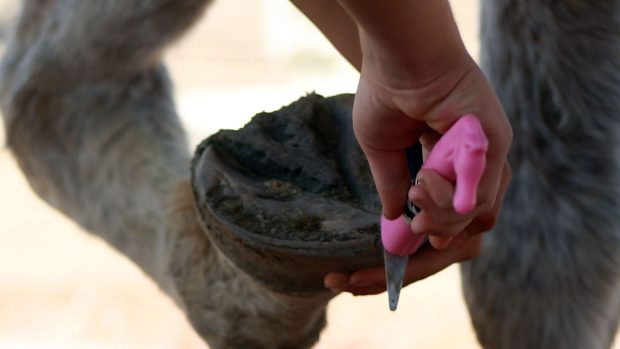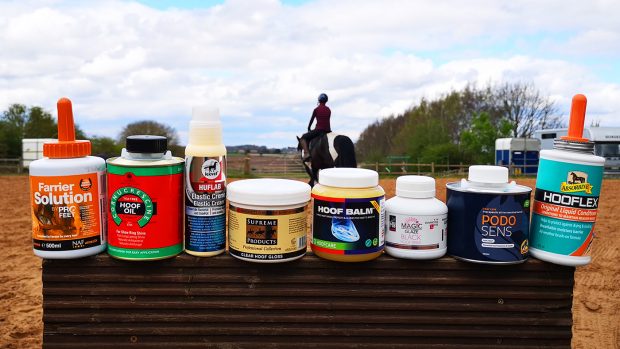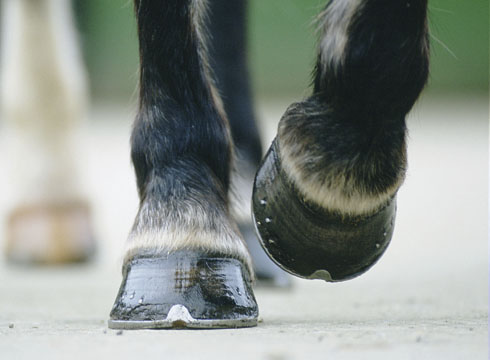Canker used to be seen predominantly in the hind feet of draught horses, caused by spending many hours standing on wet, dirty bedding or in filthy yards. It can, however, occur in any type of horse if the conditions are suitably unhygienic and is often initially mistaken for a non-responsive case of thrush.
It is caused by various bacteria that infect the deeper tissue layers of the frog and the heel. The result is the disintegration of the intertubular horn into a mass of soft vegetative strands caked in a paste of cheesy white pus, with a characteristic pungent odour and a tendency to bleed.
In the early stages, there may be no obvious discomfort or lameness but if allowed to progress the infection can extend to undermine the sole as well as the laminae of the hoof wall. The abnormal finger-like papillae of diseased horn growing out from the frog and adjacent sole are easily recognisable.
Ultimately, the wall itself becomes loose, with its only remaining attachment being at the coronet. At this stage the horse will often “stamp” its foot in discomfort and lameness will become increasingly evident.
Treatment is difficult, expensive and time consuming, due to the depth of the infection. As with thrush, it revolves around aggressively removing the diseased tissue (often necessitating a general anaesthetic), followed by the variable application of caustic agents, astringent solutions and/or antibiotics, plus dressings, hospital plates or even plaster casts to keep the area protected.
This whole procedure may need to be repeated every few days for weeks or even months, before the outcome — success or terminal failure — becomes clear.
What causes canker?
- Unhygienic environmental conditions: Stabling for prolonged periods on soiled, sodden bedding; turnout on constantly damp, swampy or marshy pasture
- Poor foot conformation (especially of the frog): Long narrow feet, prone to contracted heels, with associated small, narrow frog and compressed involuted central groove (see right); sheared heels, where a gap develops between the bulbs of the heels due to a chronic foot imbalance; an acquired frog deformity, perhaps as the result of an injury
- Poor or incorrect foot trimming/shoeing: A badly fitting frog plate of a heart-bar shoe can damage the frog, leading to a secondary infection; a badly shaped shoe, nailed too far back, can prevent expansion and contraction of the heels, leading to shrinkage and possible “rotting away” of the frog; shoeing with full pads, allowing dirt and moisture to collect and fester
- Poor foot care: Not regularly picking out and cleaning the feet
This formed part of a veterinary feature first published in Horse & Hound (26 July, ’07)




